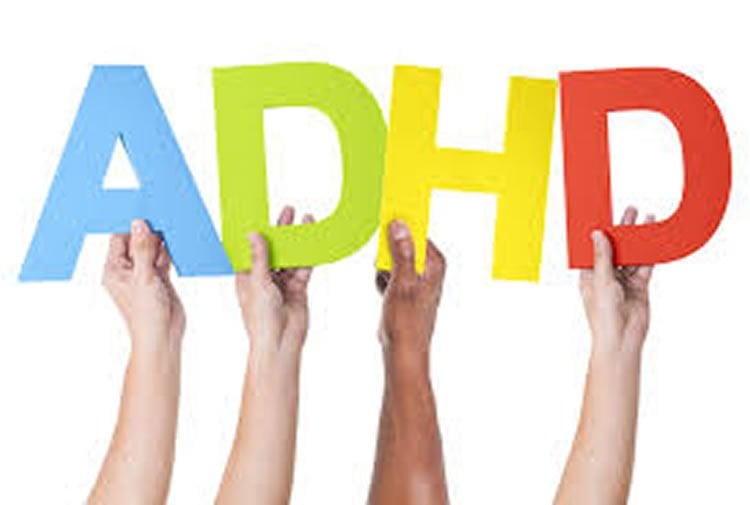Summary: Researchers suggest more emphasis be placed on attention deficit rather than hyperactivity in people with ADHD.
Source: Radboud University.
Hyperactivity seems to be the result of not being able to focus one’s attention rather than the other way around. This was proposed in an article in PLOS ONE, written by researchers at Radboud university medical center and Radboud University. It seems to suggest that more attention should be given to the AD than to the HD component.
ADHD is a combination of having difficulties with focusing one’s attention (attention deficit, AD) and overly active, impulsive behaviour (hyperactivity disorder, HD). Interestingly enough, many people often struggle with a combination of both characteristics. Very often they are both easily distracted and impulsive, in other words, both AD and HD. “Which leads to the question of whether this involves a correlation, a coincidental combination, or perhaps a causal relation,” states computer scientist Tom Heskes.
Algorithms
Tom Heskes investigated this question together with psychiatrist Jan Buitelaar, brain researcher Jeffrey Glennon, geneticist Barbara Franke and several other colleagues at Radboud university medical center and Radboud University. Heskes is specialised in using computer algorithms to search for causal relations in large amounts of data. An example he enjoys sharing is that children who have a large shoe size often get good marks for geography. At first sight, those two facts seem unrelated; it’s just a correlation. “But when you add another factor – older children (who have had more geography lessons) have larger feet – the correlation becomes more of a causal relation.”
Genes and sex
Heskes also applied this approach to ADHD. “You very often see the characteristics combined, but you can’t say that inattention – attention deficit – leads to hyperactivity. Nor can you say that hyperactivity leads to inattention. Just as in the example above, you need at least a third factor that can provide information about a possible causal relation.” In his search, Heskes used the information provided by the other researchers. It is known that some genetic variations generate a higher chance of the existence of ADHD. Similarly, we know that men exhibit ADHD more often than women. Heskes: “In both cases, our computer algorithms find a causal relation that runs from a lack of attention to hyperactive, impulsive behaviour. And not the other way around; in three separate, independent datasets, there seems to be no indication that impulsive, hyperactive behaviour caused by the inability to concentrate, to focus your attention on something.”

Attention!
“This causal relation was also suggested in early psychiatric literature,” says psychiatrist Jan Buitelaar, “but as far as we know there was never any hard evidence supporting this claim. It’s interesting to see that this mathematical approach enables us to talk with more certainty about a causal relation. And it would be even more interesting, for example, to study whether we can find a more neurological basis for that relation. This knowledge would also enable a therapeutic approach because, if inattention is in fact the force behind impulsive, hyperactive behaviour, treatment could focus on dealing with the lack of attention rather than on hyperactivity. This study indicates that the chance of reducing hyperactivity by reducing inattention may be more successful than trying to do it the other way around.”
Source: Radboud University
Image Source: This NeuroscienceNews.com image is adapted from the Radboud University press release.
Original Research: Full open access research for “Statistical Evidence Suggests that Inattention Drives Hyperactivity/Impulsivity in Attention Deficit-Hyperactivity Disorder” by Elena Sokolova, Perry Groot, Tom Claassen, Kimm J. van Hulzen, Jeffrey C. Glennon, Barbara Franke, Tom Heskes, Jan Buitelaar in PLOS ONE. Published online October 21 2016 doi:10.1371/journal.pone.0165120
[cbtabs][cbtab title=”MLA”]Radboud University. “Data Scientists Find Causal Relation in Characteristics of ADHD.” NeuroscienceNews. NeuroscienceNews, 1 December 2016.
<https://neurosciencenews.com/adhd-characteristics-data-science-5673/>.[/cbtab][cbtab title=”APA”]Radboud University. (2016, December 1). Data Scientists Find Causal Relation in Characteristics of ADHD. NeuroscienceNews. Retrieved December 1, 2016 from https://neurosciencenews.com/adhd-characteristics-data-science-5673/[/cbtab][cbtab title=”Chicago”]Radboud University. “Data Scientists Find Causal Relation in Characteristics of ADHD.” https://neurosciencenews.com/adhd-characteristics-data-science-5673/ (accessed December 1, 2016).[/cbtab][/cbtabs]
Abstract
Statistical Evidence Suggests that Inattention Drives Hyperactivity/Impulsivity in Attention Deficit-Hyperactivity Disorder
Background
Numerous factor analytic studies consistently support a distinction between two symptom domains of attention-deficit/hyperactivity disorder (ADHD), inattention and hyperactivity/impulsivity. Both dimensions show high internal consistency and moderate to strong correlations with each other. However, it is not clear what drives this strong correlation. The aim of this paper is to address this issue.
Method
We applied a sophisticated approach for causal discovery on three independent data sets of scores of the two ADHD dimensions in NeuroIMAGE (total N = 675), ADHD-200 (N = 245), and IMpACT (N = 164), assessed by different raters and instruments, and further used information on gender or a genetic risk haplotype.
Results
In all data sets we found strong statistical evidence for the same pattern: the clear dependence between hyperactivity/impulsivity symptom level and an established genetic factor (either gender or risk haplotype) vanishes when one conditions upon inattention symptom level. Under reasonable assumptions, e.g., that phenotypes do not cause genotypes, a causal model that is consistent with this pattern contains a causal path from inattention to hyperactivity/impulsivity.
Conclusions
The robust dependency cancellation observed in three different data sets suggests that inattention is a driving factor for hyperactivity/impulsivity. This causal hypothesis can be further validated in intervention studies. Our model suggests that interventions that affect inattention will also have an effect on the level of hyperactivity/impulsivity. On the other hand, interventions that affect hyperactivity/impulsivity would not change the level of inattention. This causal model may explain earlier findings on heritable factors causing ADHD reported in the study of twins with learning difficulties.
“Statistical Evidence Suggests that Inattention Drives Hyperactivity/Impulsivity in Attention Deficit-Hyperactivity Disorder” by Elena Sokolova, Perry Groot, Tom Claassen, Kimm J. van Hulzen, Jeffrey C. Glennon, Barbara Franke, Tom Heskes, Jan Buitelaar in PLOS ONE. Published online October 21 2016 doi:10.1371/journal.pone.0165120







